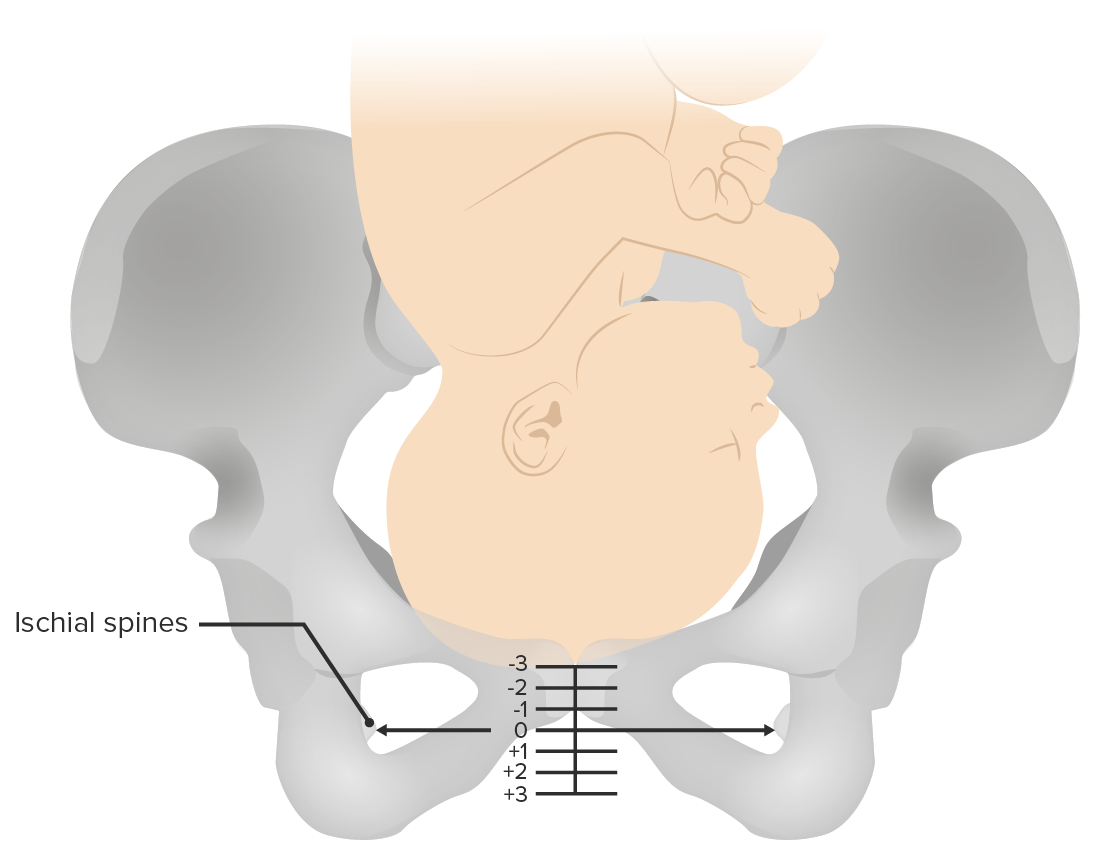Playlist
Show Playlist
Hide Playlist
Labor Stage 3: Laceration and Episiotomy
-
Slides EpisiotomyandLaceration Obstetrics.pdf
-
Download Lecture Overview
00:01 Now let's discuss episiotomy and laceration. 00:06 So there's 4 types of episiotomy or lacerations that we can see. 00:10 And we're going to go through the classification. 00:13 Now this can result from a episiotomy that tears further or laceration that happens spontaneously. 00:19 First degree means you have injury to the vagina to the epithelium that's there. 00:24 And the vulva skin only. 00:27 Second degree means we have injury to the perineal muscles, but not the anal sphincter. 00:34 Third degree means injury to the perineum and involves the anal sphincter. 00:38 And then fourth degree our highest degree is injury to the perineum involving the anal sphincter all the way through to the rectal muscosa. 00:48 So here's a high yield slide to help you remember those 4 classifications. 00:52 Now episiotomies are performed if more room is needed to deliver the baby or to perform maneuvers to relieve a shoulder dystocia. 01:02 It is no longer recommended to routinely perform episiotomy at the time of delivery. 01:07 In the picture here, the operator is cutting a mediolateral episiotomy. 01:13 This can be done to the left or the right, so you can have what's called a "Left Mediolateral Episiotomy or LML" or a "Right Mediolateral Episiotomy (RML). 01:23 Though which way you cut it left or right is really depended on the physician of what he's comfortable with. 01:29 The episiotomy can also be cut straight down the mid line. 01:34 Now with the RML and the LML patients sometimes have more pain with healing but with the midline episiotomy, that one is more likely to extend into a third or fourth degree laceration.
About the Lecture
The lecture Labor Stage 3: Laceration and Episiotomy by Veronica Gillispie, MD, MAS, FACOG is from the course Intrapartum Care.
Included Quiz Questions
Which of the following options describes a third-degree laceration?
- Injury to the perineal muscles involving the anal sphincter complex.
- Injury to the vaginal epithelium and vulva skin leaving the muscles intact.
- Injury to the perineal muscles, not including the anal sphincter.
- Injury to the perineum, anal sphincter complex, and rectal mucosa.
- Injury to the vaginal epithelium and the cervix.
Which of the following statements regarding a midline episiotomy compared to a mediolateral episiotomy is TRUE?
- It has a high risk of extending to a third or fourth-degree injury during delivery.
- It requires longer healing time.
- It is typically more painful during the healing process.
- It always involves the anal sphincter complex.
- It is less effective in creating space for delivery.
A 21-year-old G1P1 just delivered a 2.8 kg baby after an uncomplicated spontaneous vaginal delivery. After delivery, the obstetrician notes 2 superficial tears in the vaginal epithelium on the left lateral wall of the vagina and the midline just past the residual hymenal ring and confirms an intact cervix and no injury to muscle tissue. What type of laceration does this patient have?
- First-degree laceration
- Second-degree laceration
- Third-degree laceration
- Fourth-degree laceration
- Fifth-degree laceration
Customer reviews
5,0 of 5 stars
| 5 Stars |
|
5 |
| 4 Stars |
|
0 |
| 3 Stars |
|
0 |
| 2 Stars |
|
0 |
| 1 Star |
|
0 |




